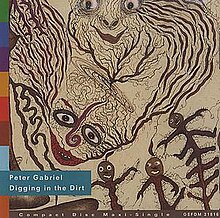
"Crazy Little Thing Called Love" is a song by the British rock band Queen. Written by Freddie Mercury in 1979, the track is included on their 1980 album The Game, and also appears on the band's compilation album Greatest Hits in 1981. The song peaked at number two in the UK Singles Chart in 1979 and became the group's first number-one single on the Billboard Hot 100 in the US in 1980, remaining there for four consecutive weeks. It topped the Australian ARIA Charts for seven weeks. It was the band's final single release of the 1970s.

"Stand by Me" is a song originally performed in 1961 by American singer-songwriter Ben E. King and written by him, along with Jerry Leiber and Mike Stoller, who together used the pseudonym Elmo Glick. According to King, the title is derived from, and was inspired by, a spiritual written by Sam Cooke and J. W. Alexander called "Stand by Me Father," recorded by the Soul Stirrers with Johnnie Taylor singing lead.

"Knockin' on Heaven's Door" is a song by American singer-songwriter Bob Dylan, written for the soundtrack of the 1973 film Pat Garrett and Billy the Kid. Released as a single two months after the film's premiere, it became a worldwide hit, reaching the Top 10 in several countries. The song became one of Dylan's most popular and most covered post-1960s compositions, spawning covers from Eric Clapton, Guns N' Roses, Randy Crawford, and more.

Us is the sixth studio album by the English singer-songwriter and musician Peter Gabriel, released on 28 September 1992 by Real World Records. Following the release of his soundtrack album Passion in 1989, Gabriel started work on new material for a new album, his first since So, which became his biggest selling release. Gabriel focused on personal themes on Us, including his divorce in the late 1980s, his subsequent relationship with actress Rosanna Arquette, and the growing distance between him and his first daughter.

"Shock the Monkey" is a song by the English rock musician Peter Gabriel. It was released in September 1982 as the first single from his fourth self-titled studio album, issued in the US under the title Security.

"Solsbury Hill" is the debut solo single by English rock musician Peter Gabriel. He wrote the song about a spiritual experience atop Solsbury Hill in Somerset, England, after his departure from the progressive rock band Genesis, of which he had been the lead vocalist since its inception. The single was a Top 20 hit in the UK, peaking at number 13, and reached number 68 on the Billboard Hot 100 chart in 1977.

"I Was Made for Lovin' You" is a song by American hard rock band Kiss, originally released on their 1979 album, Dynasty. It was released as the A-side of their first single from the album, with "Hard Times" as the B-side.
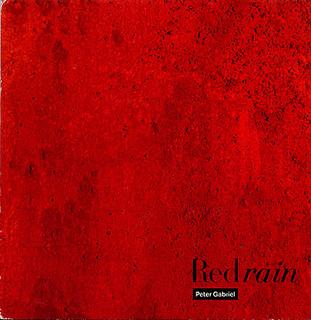
"Red Rain" is the first track on English rock musician Peter Gabriel's fifth solo studio album So (1986). In the United States, it was the second single from the album and reached number three on Billboard magazine's Mainstream Rock chart in 1986, where it stayed for three weeks between July and August. In the rest of the world it was not released until 1987 and received less airplay and fewer sales, peaking at 46 in the UK Singles Chart after entering the chart in July of that year. A live version also charted in the US and the UK in 1994.

"Sledgehammer" is a song by the English rock musician Peter Gabriel. It was released in April 1986 as the lead single from his fifth studio album, So (1986). It was produced by Gabriel and Daniel Lanois. It reached No. 1 in Canada on 21 July 1986, where it spent four weeks; No. 1 on the Billboard Hot 100 chart in the United States on 26 July 1986; and No. 4 on the UK Singles Chart, thanks in part to its music video. It was his biggest hit in North America and ties with "Games Without Frontiers" as his biggest hit in the United Kingdom.
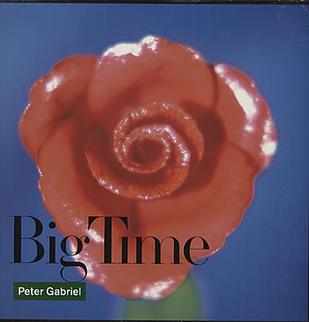
"Big Time" is a song by English rock musician Peter Gabriel from his fifth studio album So (1986). It was his second top-ten single on the Billboard Hot 100, peaking at no. 8.

"No Son of Mine" is a song by British rock group Genesis, released in October 1991 by Atlantic and Virgin as the lead single from their 14th album, We Can't Dance (1991). The song, written by Phil Collins and composed by him with Tony Banks and Mike Rutherford, reached No. 6 on the UK Singles Chart and No. 12 on the US Billboard Hot 100. It was also a top-10 hit in several European countries and peaked atop Canada's RPM 100 Hit Tracks chart for five weeks.

"Don't Give Up" is a song written by English rock musician Peter Gabriel and recorded as a duet with English singer Kate Bush for Gabriel's fifth solo studio album So (1986). The single version was released as the second single from the album in the UK in October 1986 and as the fourth single in the US in March 1987. It spent eleven weeks in the UK Top 75 chart in 1986, peaking at number nine.

"Summer Breeze" is a 1972 song by American soft rock duo Seals and Crofts. It is the title track of their fourth studio album, and was released as the album's lead single in August 1972. The song reached No. 6 on the US Billboard Hot 100 chart in the US. In 2013, it was ranked No. 13 in Rolling Stone′s "Best Summer Songs of All Time". The song also became a hit for the Isley Brothers in 1974.
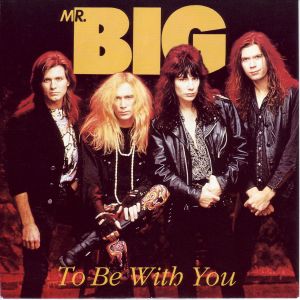
"To Be with You" is a song by American rock band Mr. Big, released in November 1991 as the second single from their second album, Lean into It (1991). The ballad reached number one on the US Billboard Hot 100 for three weeks and topped the charts in 11 other countries, including Australia, Canada, Germany, and New Zealand.
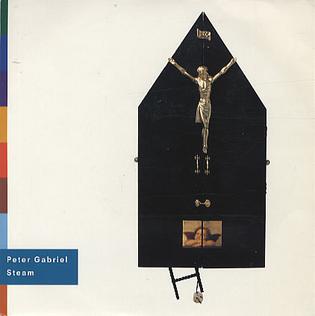
"Steam" is a song by English rock musician Peter Gabriel, released in December 1992 by Geffen Records as the second single from his sixth album, Us (1992). Gabriel, who wrote the song and produced it with Daniel Lanois, has said that the song is about a relationship in which the woman is sophisticated, bright, cultured, and knows everything about anything while the man knows nothing about anything; however, he does know about the woman, and she does not know much about herself.

"Games Without Frontiers" is a song written and recorded by the English rock musician Peter Gabriel. It was released on his 1980 self-titled third studio album, where it included backing vocals by Kate Bush. The song's lyrics are interpreted as a commentary on war and international diplomacy being like children's games. The music video includes film clips of Olympic Games events and scenes from the educational film Duck and Cover (1951), which used a cartoon turtle to instruct US schoolchildren on what to do in case of nuclear attack. This forlorn imagery tends to reinforce the song's anti-war theme. Two versions of the music video were initially created for the song, followed by a third one made in 2004.

"My Brave Face" is a song by the English musician Paul McCartney, released as a single from his 1989 album, Flowers in the Dirt. Written by McCartney and Elvis Costello, "My Brave Face" is one of the most popular songs from Flowers in the Dirt. It peaked at number 18 in the United Kingdom and at number 25 in the United States. It was McCartney's last top 40 hit on the Billboard Hot 100 until his 2014 collaboration with Kanye West, "Only One", and was the last Billboard top 40 hit by any former Beatle as a solo artist.
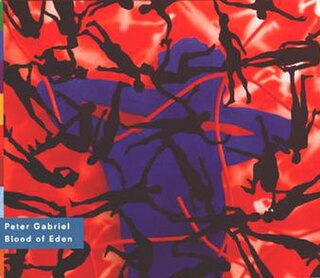
"Blood of Eden" is the third single from English rock musician Peter Gabriel's sixth album, Us (1992), featuring backing vocals by Irish singer-songwriter Sinéad O'Connor. It was written by Gabriel and produced by him with Daniel Lanois. The single was released in March 1993 by Geffen, Real World and Virgin, and narrowly failed to enter the UK top 40, peaking at number 43.

"What You Won't Do for Love" is a song by American singer-songwriter Bobby Caldwell. It was released in September 1978 as the lead single from his eponymous debut album (1978). It was written by Caldwell and Alfons Kettner, and produced by Ann Holloway. The song has been covered and sampled numerous times, including by Tupac Shakur in the posthumous 1998 hit "Do for Love".
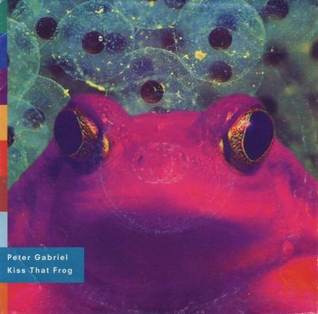
"Kiss That Frog" is the fourth single from English rock musician Peter Gabriel's sixth album, Us (1992). It was written by Gabriel and produced by him with Daniel Lanois. The single was released in September 1993 by Real World, and narrowly failed to enter the UK top 40, peaking at number 46. However, the song did reach the top 40 in Canada, where it peaked at number 36. In the United States, the song missed the Billboard Hot 100 but reached number 18 on both the Billboard Alternative Airplay and Mainstream Rock charts.
